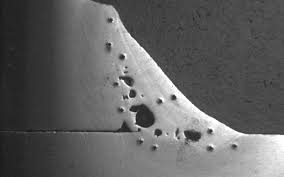Understanding Porosity in Welding: Exploring Reasons, Effects, and Avoidance Strategies
As specialists in the welding industry are well aware, comprehending the reasons, results, and avoidance strategies related to porosity is critical for achieving robust and trusted welds. By diving right into the root creates of porosity, analyzing its detrimental effects on weld quality, and discovering efficient prevention strategies, welders can enhance their knowledge and skills to produce top notch welds continually.
Typical Sources Of Porosity
Porosity in welding is mostly triggered by a combination of variables such as contamination, incorrect securing, and inadequate gas protection throughout the welding process. Contamination, in the type of dirt, oil, or corrosion on the welding surface, produces gas pockets when warmed, leading to porosity in the weld. Incorrect securing happens when the shielding gas, generally used in processes like MIG and TIG welding, is not able to completely shield the liquified weld pool from responding with the bordering air, leading to gas entrapment and succeeding porosity. Furthermore, inadequate gas insurance coverage, usually because of incorrect circulation rates or nozzle positioning, can leave parts of the weld unsafe, enabling porosity to form. These factors jointly add to the formation of spaces within the weld, deteriorating its stability and possibly triggering structural problems. Recognizing and addressing these usual causes are vital action in preventing porosity and ensuring the top quality and toughness of bonded joints.
Impacts on Weld Top Quality
The presence of porosity in a weld can substantially endanger the total quality and stability of the bonded joint. Porosity within a weld produces gaps or cavities that deteriorate the structure, making it much more prone to fracturing, deterioration, and mechanical failing. These voids act as tension concentrators, decreasing the load-bearing capability of the weld and boosting the probability of early failing under used stress and anxiety. On top of that, porosity can additionally function as possible websites for hydrogen entrapment, more exacerbating the degradation of the weld's mechanical residential properties.
Additionally, porosity can impede the efficiency of non-destructive testing (NDT) methods, making it testing to identify other defects or gaps within the weld. This can bring about substantial safety and security worries, particularly in important applications where the structural integrity of the bonded elements is critical.

Prevention Techniques Overview
Offered the detrimental content impact of porosity on weld top quality, reliable avoidance strategies are crucial to maintaining the structural stability of bonded joints. Furthermore, choosing the proper welding specifications, such as voltage, present, and take a trip Homepage rate, can aid decrease the threat of porosity development. By integrating these prevention methods right into welding methods, the incident of porosity can be substantially decreased, leading to more powerful and extra dependable bonded joints.
Importance of Correct Protecting
Appropriate protecting in welding plays a critical duty in protecting against atmospheric contamination and guaranteeing the integrity of welded joints. Shielding gases, such as argon, helium, or a combination of both, are generally utilized to safeguard the weld pool from responding with components airborne like oxygen and nitrogen. When these reactive components enter contact with the warm weld swimming pool, they can trigger porosity, resulting in weak welds with reduced mechanical homes.

Poor shielding can lead to numerous problems like porosity, spatter, and oxidation, endangering the architectural stability of the welded joint. Therefore, adhering to correct shielding techniques is necessary to produce high-grade welds with minimal flaws and make certain the durability and integrity of the welded parts (What is Porosity).
Surveillance and Control Methods
Exactly how can welders efficiently keep track of and control the welding process to guarantee optimal outcomes and stop flaws like porosity? By constantly keeping an eye on these variables, welders can determine discrepancies from the optimal conditions and make immediate changes to stop porosity formation.

Additionally, implementing correct training programs for welders is necessary for keeping an eye on and managing the welding process properly. What is Porosity. Informing welders on the significance of keeping constant specifications, such as proper gas securing and travel rate, can assist avoid porosity concerns. Routine assessments and qualifications can likewise ensure that welders excel in monitoring and regulating welding processes
In addition, making use of automated welding systems can enhance surveillance and control abilities. These systems can specifically control welding parameters, minimizing the likelihood of human mistake and ensuring constant weld quality. By incorporating advanced tracking technologies, training programs, and automated systems, welders can click this site properly keep track of and control the welding procedure to minimize porosity flaws and accomplish top quality welds.
Verdict

Comments on “What is Porosity in Welding: Best Practices for Preventing Permeable Welds”